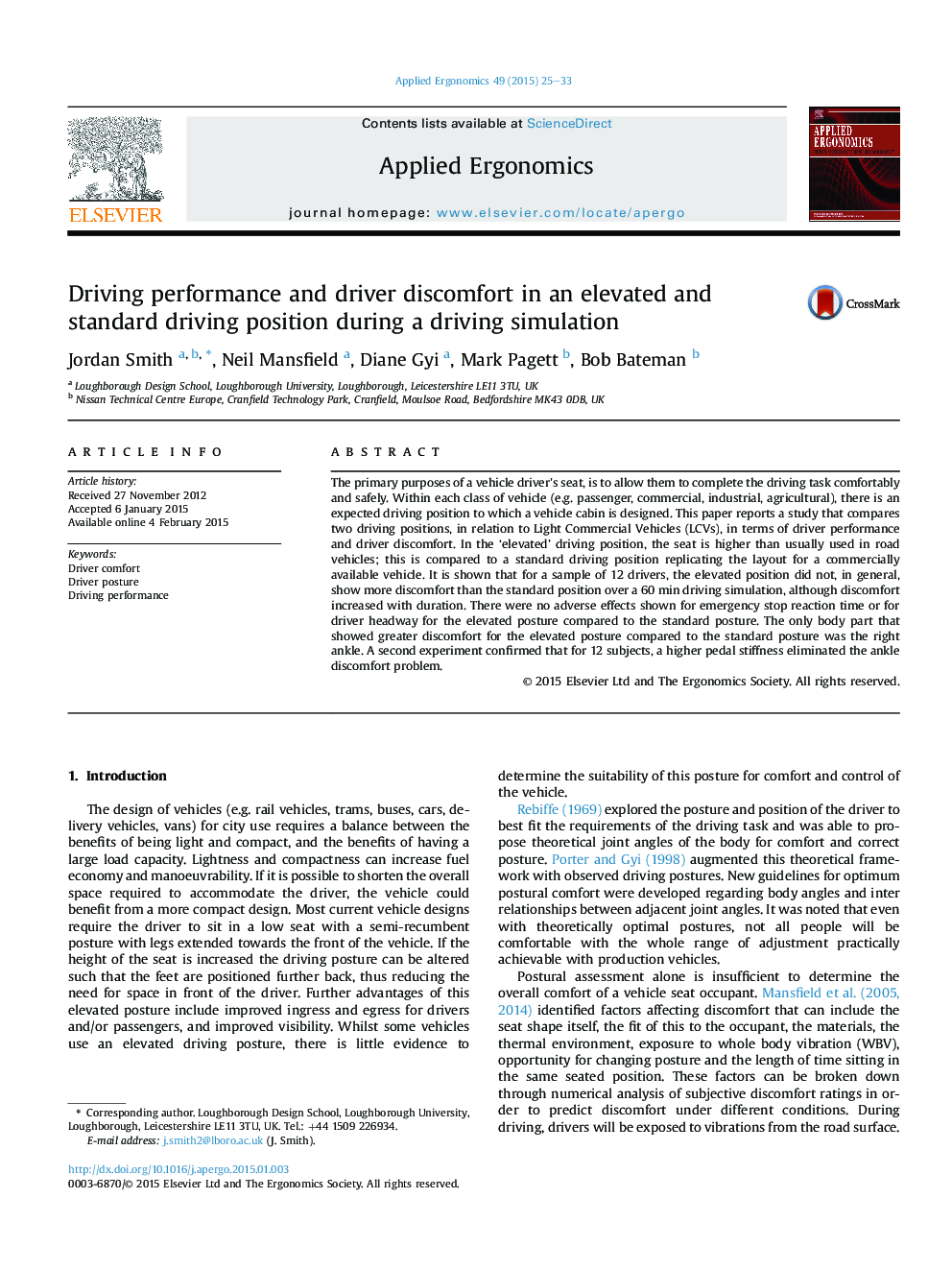| Article ID | Journal | Published Year | Pages | File Type |
|---|---|---|---|---|
| 548325 | Applied Ergonomics | 2015 | 9 Pages |
•An elevated driving posture does not adversely affect comfort.•An elevated driving posture does not adversely affect driver performance.•Accelerator pedal stiffness is associated with ankle discomfort.
The primary purposes of a vehicle driver's seat, is to allow them to complete the driving task comfortably and safely. Within each class of vehicle (e.g. passenger, commercial, industrial, agricultural), there is an expected driving position to which a vehicle cabin is designed. This paper reports a study that compares two driving positions, in relation to Light Commercial Vehicles (LCVs), in terms of driver performance and driver discomfort. In the ‘elevated’ driving position, the seat is higher than usually used in road vehicles; this is compared to a standard driving position replicating the layout for a commercially available vehicle. It is shown that for a sample of 12 drivers, the elevated position did not, in general, show more discomfort than the standard position over a 60 min driving simulation, although discomfort increased with duration. There were no adverse effects shown for emergency stop reaction time or for driver headway for the elevated posture compared to the standard posture. The only body part that showed greater discomfort for the elevated posture compared to the standard posture was the right ankle. A second experiment confirmed that for 12 subjects, a higher pedal stiffness eliminated the ankle discomfort problem.
